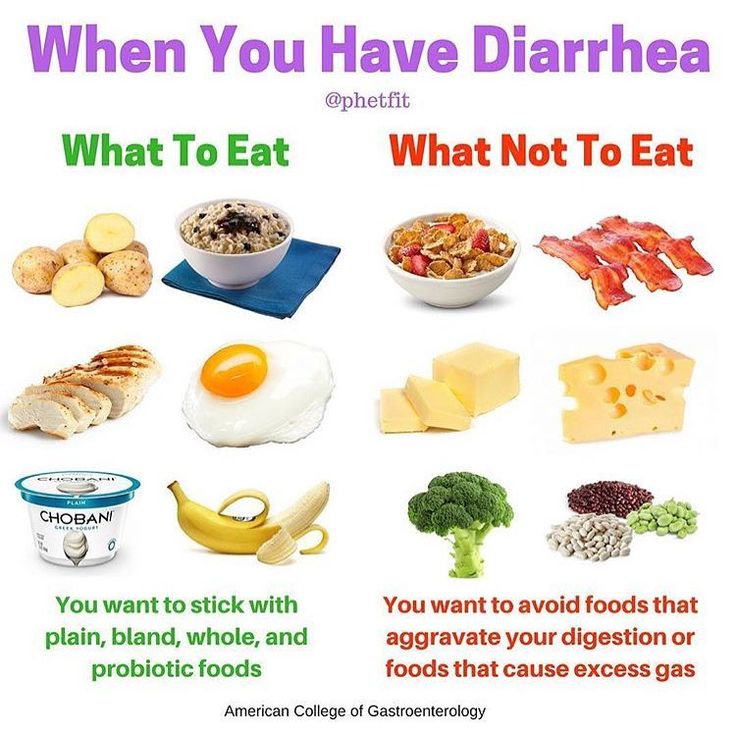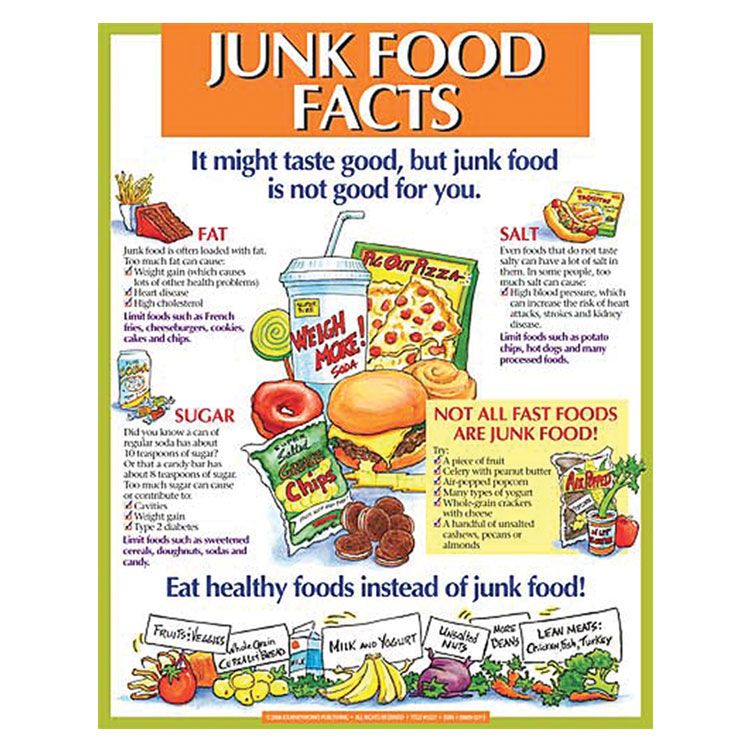When to stop feeding baby food
When to Stop Pureed Food for Infants | Healthy Eating
By Krista Sheehan Updated December 12, 2018
Knowing when to stop pureed foods in your baby's diet isn't as easy as knowing when to change his diaper. There is no one-size-fits-all rule for feeding your baby -- but he'll let you know when he's ready. Adding pureed foods to your baby’s diet at around 4 months of age introduces a new world of tastes and textures. But knowing when to stop pureed foods -- usually around 1 year of age -- is important for helping your baby develop chewing and swallowing skills.
Developmental Timeline
Typically, infants are started on pureed foods between 4 to 6 months of age. In the beginning, choose pureed foods with only one ingredient. As the infant becomes more accustomed to the new texture, include pureed foods with a combination of ingredients -- this typically occurs around 6 to 8 months of age. As your baby moves into the 8- to 10-month time frame, chunkier pureed foods can be introduced. If your baby does well with these foods, introduce soft, cooked vegetables and cooked fruits, breads, soft cereals, scrambled eggs and yogurt around 10 to 12 months of age. If your baby manages these soft foods easily, stop pureed foods. Ideally, your baby should not be eating pureed foods after 1 year of age.
Baby’s Readiness Cues
Your baby will give you certain clues that indicate he’s ready for solid and finger foods. These cues might include picking up foods with his thumb and forefinger, easily transferring items from one hand to the other and moving his mouth in a chewing motion. Your baby will also be ready to stop eating pureed foods as he develops more teeth and gains more control of his tongue. However, if you attempt to stop pureed foods at 12 months and your baby is struggling with solid and finger foods, adding pureed foods back into the diet might be necessary. Consult your pediatrician if you have any concerns or questions about your baby’s specific diet.
Allergy Considerations
When adding new foods to a baby’s diet, add only one new ingredient at a time. This feeding plan allows you to more easily identify a baby’s allergies or sensitivities to specific foods. Allow your baby to eat the new ingredient for a few days -- unless an allergic reaction occurs, of course. If no reactions occur after a few days, you can safely add another new ingredient to your baby’s diet.
Foods to Avoid
Certain foods and ingredients should be completely avoided in a baby’s diet. According to the Florida Department of Health, your baby should never be given pureed foods made with honey, corn syrup, added sugar, artificial sweeteners, spices, seasonings or salt.
References- March of Dimes: Feeding Your Baby
- Cooking Light: Baby Feeding Timeline
- BabyCenter: Age-by-Age Guide to Feeding your Baby
Krista Sheehan is a registered nurse and professional writer. She works in a neonatal intensive care unit (NICU) and her previous nursing experience includes geriatrics, pulmonary disorders and home health care. Her professional writing works focus mainly on the subjects of physical health, fitness, nutrition and positive lifestyle changes.
She works in a neonatal intensive care unit (NICU) and her previous nursing experience includes geriatrics, pulmonary disorders and home health care. Her professional writing works focus mainly on the subjects of physical health, fitness, nutrition and positive lifestyle changes.
When and how to stop pureeing
There’s no set point at which your baby should make the transition from runny purees to solid foods. The stage at which he becomes ready for chunkier textures depends on many factors, from his physical development to his sensitivity to texture. But as a guide, it’s wise to try to gradually alter the consistency of his foods from seven months onwards, and aim to have stopped pureeing completely by 12 months.
Is your baby ready for solids?
Signs that your baby may be ready to move on from purees include:
- Being able to sit up independently, with good head control
- Starting to put objects in his mouth, and explore them with his tongue and gums
- Having some teeth – although this isn’t essential
- Taking puree from a spoon and swallowing them with minimal gagging or spitting
- Showing an interest in the foods at family meals
Babies may be ready for lumpier foods at any point from weaning until 12 months or even beyond. Some don’t show any obvious signs of needing to move on from purees; if this is the case, introducing more textured foods is likely to be a matter of trial and error. Here's what to do if your baby refuses lumps.
Some don’t show any obvious signs of needing to move on from purees; if this is the case, introducing more textured foods is likely to be a matter of trial and error. Here's what to do if your baby refuses lumps.
How to stop pureeing
When you think your baby is ready for more solid textures, try the following tactics:
- Thicken your baby’s purees by blending them for a shorter amount of time, or adding another ingredient such as thoroughly mashed potato or thick baby rice
- Use a food mill rather than a blender to prepare foods, giving a slightly thicker texture
- Divide a portion of food into two parts. Puree one half, grate or mill the other half, and mix them together
- Grate some food and mix it into a smooth puree or yoghurt – you could try grating apple and combining it with yoghurt
- Offer some solid finger food, such as well cooked carrots or chunks of banana, alongside a pureed meal or as a snack
Getting used to lumps
It’s normal for babies to take some time to adjust to more solid foods. It’s important to persevere, but don’t rush it. Make mealtimes fun and reassuring, with lots of praise when he attempts a new texture, keeping calm if he refuses. Remember, it can take up to 20 trials before a baby accepts a new food or texture.
It’s important to persevere, but don’t rush it. Make mealtimes fun and reassuring, with lots of praise when he attempts a new texture, keeping calm if he refuses. Remember, it can take up to 20 trials before a baby accepts a new food or texture.
It’s also quite common for babies to gag as they get used to non-pureed food. This can be frightening for you, but is actually your baby’s way of stopping himself from choking by pushing the food out of his throat. Here are a few tips to help him learn to chew.
Next steps
Once your baby is used to eating lumpier food, you can move on to mashing it, and then to chopping it finely. Bear in mind that some textures are harder for your baby than others – for example, he may be happily taking most of his foods mashed by 10 months old, but you might still need to puree meat for him, particularly if he hasn’t got any teeth yet.
If your baby is reluctant to accept any textured food, or if he seems to be gagging excessively, ask your health visitor for advice – but remember that with patience, most feeding problems resolve themselves in time.
Rules for feeding children
At 3 months of a child's life, digestive enzymes mature. At 3-4 months, local intestinal immunity and ingestion mechanisms are formed. From 6 months, mother's milk or formula cannot fully meet the needs of the growing body of the child for energy and nutrients, therefore, too late - after 6 months - the introduction of complementary foods is undesirable. At this time, breast milk also can no longer provide the grown-up child with the necessary amount of trace elements (especially zinc and iron). A monotonous diet can lead to growth retardation and inhibition of the development of such an important skill as chewing, which prepares the gums for teething. The lack of a positive perception of the child's new taste and texture of food inhibits psycho-emotional development.
The introduction of complementary foods to children is advisable to start at the age of 4 to 6 months. The sequence of appearance of certain products and complementary foods in the child's diet depends on the state of his health and the capabilities of the digestive system. There are rules for the introduction of complementary foods.
There are rules for the introduction of complementary foods.
Regulation No. 1
Graduality and dosage. During the week, the baby is given only 1 unfamiliar dish. Its initial dose may seem microscopic, but it is enough to know the reaction of the child's body to the product. If on the 1st day after the introduction of a new complementary food, the skin condition, temperature, consistency and color of the baby's stool will be without visible changes, then the next day the portion can be slightly increased.
“From 6 months, mother’s milk or formula cannot fully satisfy the needs of the growing body of the child for energy and nutrients, so too late - after 6 months - the introduction of complementary foods is undesirable.”
The first dish of the child can be, for example, vegetable puree. It is better to start with mashed zucchini, cauliflower, potatoes or pumpkin. The portion size depends on the age of the baby. Complementary foods should be introduced gradually: from ½ teaspoon in 1-2 weeks, increasing the portion to the age norm - 100-150 g. The 2nd week falls on the child's complete adaptation to a new dish. Only after that you can talk about combining vegetable dishes and start trying the 2nd complementary foods, which are already introduced somewhat faster (on average, 3-4 days). If an allergy or an upset stomach appears, then the introduction of complementary foods is stopped, and further nutritional actions are discussed with the pediatrician.
The 2nd week falls on the child's complete adaptation to a new dish. Only after that you can talk about combining vegetable dishes and start trying the 2nd complementary foods, which are already introduced somewhat faster (on average, 3-4 days). If an allergy or an upset stomach appears, then the introduction of complementary foods is stopped, and further nutritional actions are discussed with the pediatrician.
Regulation No. 2
Introduction time. Complementary foods should be given to the child in the morning and afternoon.
Regulation No. 3
Form. Unlike artificial feeding, complementary foods are initially offered to the child in an “adult” form, that is, the baby is fed with a small baby spoon.
Regulation No. 4
temperature and consistency. Mom's milk has a body temperature, so at the beginning of the introduction of complementary foods, all dishes for the baby should be warmed up or cooled to 36-37 degrees. Closer to 1 year, children adapt to the fact that food can have different temperatures. And then it is enough to ensure that the food is not too hot or cold for the baby.
And then it is enough to ensure that the food is not too hot or cold for the baby.
“If an allergy or indigestion appears, then the introduction of complementary foods is stopped, and further nutritional actions are discussed with the pediatrician.”
The younger the child, the more liquid the food should be. As the baby's teeth erupt, the food becomes thicker and harder.
You can not introduce new complementary foods into the diet of a child who does not feel well. Colds, constipation and preventive vaccinations lower the body's resistance to the baby. During this period, his menu should be familiar and safe.
The child's complementary foods should not contain fruits, as they are allergenic, fatty fish and meat, seafood, nuts, honey, as well as salted, smoked, fried and canned foods.
Usually, cereals for children under one year old are made from rice, buckwheat, oatmeal or corn grits. You should not start complementary foods with coarse cereals - pearl barley or millet. Gluten, a protein present in some cereals, can provoke diseases of the gastrointestinal tract and related disorders (changes in the intestinal microflora, allergic manifestations) in infants. Gluten is part of oatmeal and wheat flour, so it is not advisable to offer these cereals to a child under 6 months old. It is better to start the introduction of cereals with gluten-free cereals (rice, buckwheat and corn), from 5-6 months you can introduce oatmeal. If a child has a reaction, then it is best to limit these foods.
Gluten, a protein present in some cereals, can provoke diseases of the gastrointestinal tract and related disorders (changes in the intestinal microflora, allergic manifestations) in infants. Gluten is part of oatmeal and wheat flour, so it is not advisable to offer these cereals to a child under 6 months old. It is better to start the introduction of cereals with gluten-free cereals (rice, buckwheat and corn), from 5-6 months you can introduce oatmeal. If a child has a reaction, then it is best to limit these foods.
Do not fanatically measure the portion size eaten by the child. His body, guided by the wisdom of nature, in most cases knows how to eat right. Active appetite stimulation is needed in a limited number of cases.
The appearance of food plays a significant role in shaping the appetite of the crumbs - food should be liked, evoke positive emotions and a desire to eat it.
“You can’t introduce new complementary foods into the diet of a child who is not feeling well.”
You should also pay attention to children's dishes. As for the material from which it is made, it should also be as safe as possible. Do not forget that children love to throw plates and mugs on the floor, as well as knock cutlery on dishes. Therefore, it is better to stay on high-quality plastic. The baby's gums are very sensitive. In order not to injure them, it is better to start feeding the baby with silicone spoons. Children's dishes should be stable and preferably with high walls. Also, the child should like it. From beautiful dishes, children eat with great pleasure.
Nutrition of a child up to a year is the foundation of his health. Therefore, it is important to lay it correctly, and in some cases, adjust the diet safely for the health of a growing baby.
Author: Oksana Plisenkova
article from the site http://med-info.ru/
How to properly combine complementary foods and formula
— Anastasia Anatolyevna, is it possible to feed a child with formula and complementary foods at the same time?
— From birth, every baby is breastfed and/or bottle fed. Regardless of the type of feeding, in the period from 4 to 7 months, babies begin to learn new types of food that supplement breast milk and milk formula. And it is important for parents to get acquainted with some principles of adding complementary foods in order to help their baby adapt to new conditions.
Regardless of the type of feeding, in the period from 4 to 7 months, babies begin to learn new types of food that supplement breast milk and milk formula. And it is important for parents to get acquainted with some principles of adding complementary foods in order to help their baby adapt to new conditions.
- Add complementary foods gradually: first with one ingredient, then with 2 or 3.
- Increase the serving slowly: start with no more than one teaspoon and work up to the desired volume within a week.
- Do not give two or three products at the same time if you are introducing them for the first time, because you need to understand how the child will react to them separately.
- Control the density of food: start with homogeneous semi-liquid purees and cereals. Then smoothly move on to thicker foods, then to pureed and chopped food with soft pieces.
- Avoid complementary foods if the child is sick and before and immediately after vaccination.

- Are there any differences in feeding infants receiving formula?
- Against the background of the mixture, the child is fed in the same way as when breastfeeding. But if the periods of introduction of the mixture and complementary foods coincide, then first let the child try the mixture and get used to it. At the time of adaptation to the mixture, complementary foods are not given.
— Are complementary foods given before or after formula?
— If the baby's habituation to the formula went smoothly, you can start feeding him, following all the rules. Supplementary food is offered with a spoon before the bottle is given. If the baby does not eat formula after complementary foods, you can increase the interval between these feedings. How to supplement the mixture after complementary foods and calculate its volume, the doctor will tell the child. When the amount of complementary foods reaches the daily age norm, they are first replaced with one, then two and three milk meals. At night, for a half-asleep child, a mixture is preferable in consistency.
At night, for a half-asleep child, a mixture is preferable in consistency.
An important criterion for the correct choice of the mixture is its good tolerance by the baby: he has an adequate weight gain, no skin rash, persistent intestinal colic, regurgitation, constipation or loose frequent stools are excluded. A greenish stool in the absence of mucus and in the case of its normal consistency for a particular child is considered a variant of the norm, and the mixture in this case is not changed.
- Can the combination of formula and complementary foods cause indigestion?
- Problems will arise, for example, if the timing of the introduction of complementary foods is violated, the portions exceed the volumes for age, or the adapted formula is introduced prematurely. Children with food allergies are at risk, therefore, when introducing any new product, identified allergens are taken into account.
If the baby does not digest or tolerate food, the mother will immediately notice this by adverse reactions to the product - rashes on the body, reddened cheeks, poor weight gain, changes in the color and smell of the stool.
— What foods should be used to feed a bottle-fed baby?
- Products are added sequentially. They start with baby purees from one vegetable or baby cereals from one type of grain without gluten, and after getting used to them, they move on to multicomponent and combined products. Fruits will be the third group: they are sweetish, and if given first, the child may then refuse food with a neutral taste.
What complementary foods to give
- The first group is baby cereals (not made with milk).
- The second group is children's vegetable purees.
- The third group - children's fruit purees, including mixed or combined with cottage cheese, other products.
- Cereal products - if the baby has prerequisites for the development of anemia, unstable stools, slight weight gain are noted.
- Vegetable products - if the child is prone to constipation, and his mother and doctor are worried about his too rapid weight gain.

It is desirable to give commercially produced baby food as the first complementary food in order to ensure complete feeding - it is of high quality raw materials, balanced composition and grinding, which corresponds to the nutritional needs and eating habits in infancy. MAMAKO ® has a tasty and healthy combination of cereals, natural goat's milk, vitamins and minerals.
Examples of such products are gluten-free corn milk porridge; buckwheat milk porridge; rice milk porridge. In total, there are ten flavors in the assortment for a varied grain menu for different ages:
- low allergenic gluten-free food for the first acquaintance with cereals,
- Whole Grain Multigrain Cereals for Diet Diversity,
- combined cereals with fruit, vegetable, berry additives.
— What should mothers look for when preparing a diet of homemade meals?
— If the mother nevertheless decided to cook at home, then you need to take into account both the quality of the raw materials and the method of preparation:
- One type of green vegetable is taken.
 It is preferable to cook for a couple, it is better to grind the product hot to the desired consistency.
It is preferable to cook for a couple, it is better to grind the product hot to the desired consistency. - For the first porridge, choose a gluten-free cereal, such as rice. The cereal can be pre-soaked in water for an hour and a half, then it is washed, boiled without salt, crushed with a blender.
- Fruits are thoroughly washed, peeled, chopped with a blender.
— From your point of view, is early feeding justified or, on the contrary, is it postponed because of the child's refusals?
- To find the right time for solid meals, you should consult a pediatrician who knows the general condition and individual characteristics of a particular child. According to pediatric recommendations, children begin to add complementary foods between 4 and 6. 5 months after birth and the start of formula feeding.
5 months after birth and the start of formula feeding.
- Up to four months: innate reflexes to accept and digest solid food are still dormant, and the gastrointestinal tract is not ready for such food.
- After six months: there is a decline in food interest and a lag in the development of chewing and swallowing skills.
- After 7 months: with a delayed start of complementary foods, allergies are more likely, there is a deficiency of certain minerals and vitamins.
If the child is not psychologically ready for complementary foods, refusals and whims are possible. Tip - try not to insist, but to arouse interest in food: during the day, often offer an unfamiliar product from a beautiful baby spoon in very small quantities. The child will gradually begin to get used to new tastes and textures - he will no longer move the spoon away with his hand, turn his head away and fall in love with cereals and mashed potatoes.
Industrial complementary foods should not contain additives that can provoke allergies. These are fruit juices, natural aggressive preservatives - currant or orange, dyes, starch and other substances.
These are fruit juices, natural aggressive preservatives - currant or orange, dyes, starch and other substances.
When first complementary foods are introduced, formula is still the main baby food, so complementary foods are offered before formula feeding, not to a full baby. Try to give complementary foods every day and increase its portion gradually so as not to frighten the baby with a large amount of unfamiliar food and not provoke digestive problems. I recommend buying ready-made cereals and mashed potatoes in jars: their consistency helps children learn to chew and swallow, and the vitamins and minerals added to the composition contribute to the growth and development of babies.
* Breast milk is the best food for babies. WHO recommends exclusive breastfeeding for the first 6 months of a child's life and continued breastfeeding after complementary foods are introduced until the age of 2 years. Before introducing new products into the baby's diet, you should consult with a specialist.











